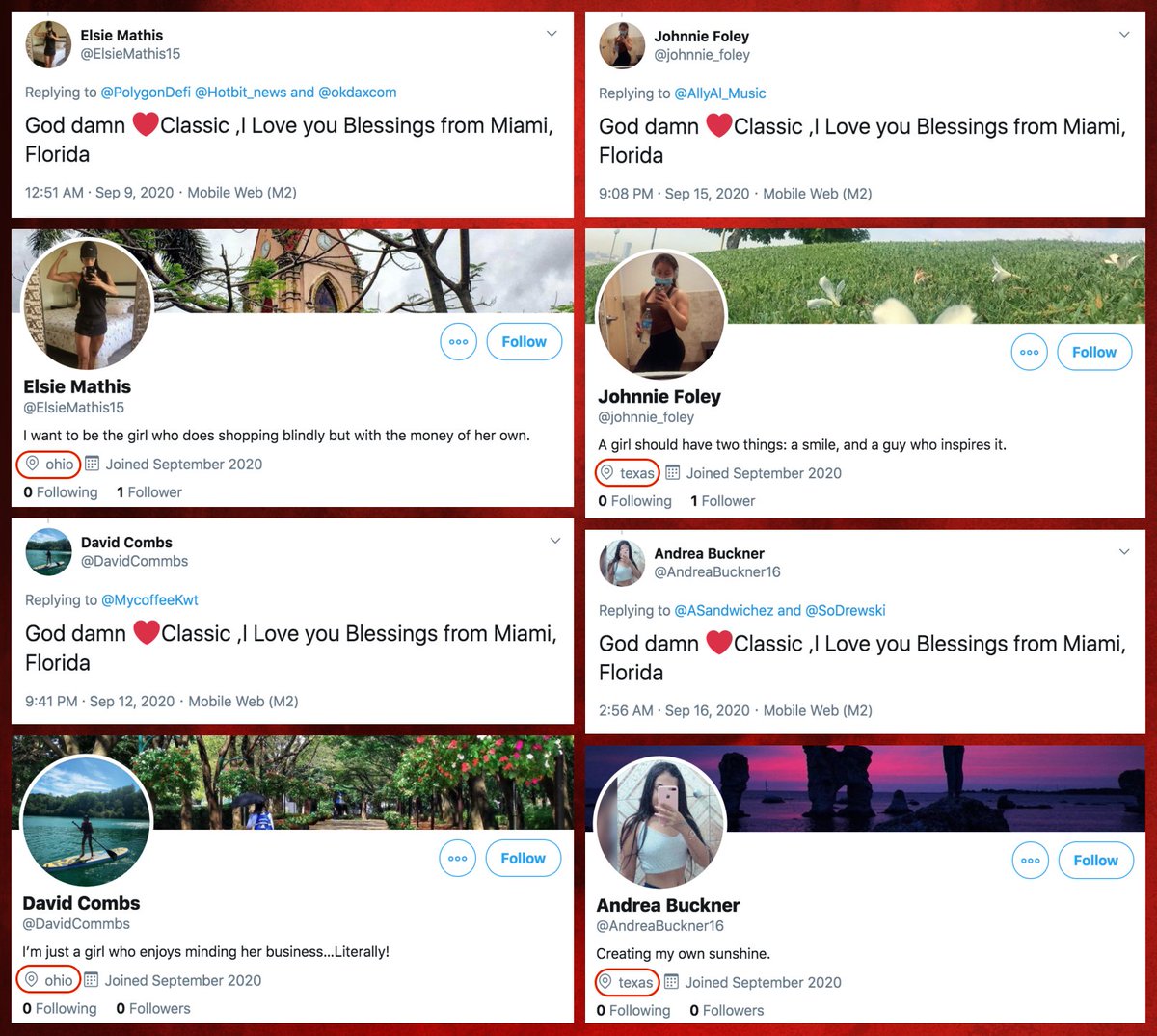Check out all the love and blessings from Miami, Florida, also known as Ohio and Texas. #YouHadOneJob #Spamtastic
cc: @ZellaQuixote
cc: @ZellaQuixote

The duplicate "blessings from Miami, Florida" tweets came from a network of ten accounts created on Sept 4 2020. These accounts tweet on nearly identical schedules, and almost all of their tweets (96.3%) are replies. Tweets are (allegedly) sent via various Twitter web products. 







These ten accounts have sent a multitude of repeated tweets in their two weeks on Twitter. The repeated tweets are a mix of generic pleasantries, praise for various cryptocurrency accounts, and attacks on a Massachusetts social worker. 

Who do these accounts reply to? It's an eclectic mix: cryptocurrency accounts, various businesses, Massachusetts state government accounts, a @BJP4India Member, and various suspended accounts, among other things. 

Unsurprisingly, the accounts in this spam network use stolen pics. Google image search did a better job finding matches for these than either TinEye or Yandex. 

• • •
Missing some Tweet in this thread? You can try to
force a refresh





























